The model Code of Practice: Healthcare and social assistance industry provides guidance for duty holders such as employers in the healthcare and social assistance industry on how to meet their work health and safety (WHS) duties and manage risks in their workplaces.
Fatigue is more than feeling tired and drowsy. It is short- or long-term exhaustion which results in reduced capacity to do things. This infographic outlines the WHS impacts of fatigue and how you can manage the risks.
Persons conducting a business or undertaking (PCBUs) must take a proactive approach to preventing racism and do all that they reasonably can to manage the risk of it occurring at work.
If you’re a person conducting a business or undertaking (PCBU), you have a duty under the model WHS laws to do all that you reasonably can to eliminate or minimise the risk of racism occurring at work.
This page provides persons conducting a business or undertaking with information on Japanese encephalitis and their duties under the model WHS laws.
This infographic shows how to apply the four-step risk management process to manage psychosocial hazards.
Use this fact sheet if your business makes or supplies alcohol-based hand sanitisers during the COVID-19 pandemic.
The eight-hour time weighted average workplace exposure standard (WES) for respirable crystalline silica (RCS) is 0.05 mg/m3.
If you work outside, you may be at risk of exposure to extreme cold.
Persons conducting a business or undertaking (PCBUs) and workers should be aware of any bushfires near your work area. Follow instructions and advice from emergency services and ensure you can evacuate the area if needed.
The follow provides information about common enquiries for working in heat.
Noise-related injuries are avoidable. Through managing the risks of exposure to noise, you can prevent damage to your workers hearing.
As the PCBU, you must protect workers from noise-related injuries. There are some things you must check and put in place to meet your duties.
Psychosocial risks should be managed using the risk management process.
Lead is a hazard to worker health and safety. Learn about lead in the workplace and the health effects from working with it.
Resources to help PCBUs manage the risk of fatigue. Resources are also available for workers.
Fatigue is more than feeling sleepy, tired and drowsy. Fatigue harms workers’ health and reduces their ability to work safely. Fatigue can arise from both work-related and non-work-related sources.
Workers’ compensation coverage of psychological injuries
Workers’ compensation is available for physical and psychological injury and disease.
Personal protective equipment (PPE) is anything a worker uses or wears to keep them healthy and safe.
Health monitoring is the monitoring of a worker by doctors to identify changes in their health status because of exposure to certain substances. If you are a person conducting a business or undertaking (PCBU), you must provide health monitoring to workers if there is a signifi
Noise can damage your hearing if it’s too loud. Both sudden, loud noises, like an explosion, and constant, loud noise, like working near industrial machinery, can damage your hearing.
Alcohol and drugs can affect a person’s ability to work safely. This includes medicines that are prescribed or over-the-counter.
As a person conducting a business or undertaking, you have a duty to keep workers and your workplace safe.
“Silica” is silicon dioxide, a naturally occurring and widely abundant mineral that is a major component of most rocks, sand and soils. It’s used to make common building materials like concrete, engineered stone (used in kitchen and other benchtops) and bricks.
Workers using hand-held power tools – such as jack-hammers, chainsaws, grinders, drills, riveters and impact wrenches – may be exposed to harmful levels of hard-arm vibration (HAV).
This report provides statistics on workers’ compensation claims that involved musculoskeletal disorders.
The purpose of this 2015 study is to estimate the cost of work-related injury and illness to Australian employers, workers and the community.
This handbook provides guidance on good work design. It includes the
Workplace bullying is a risk to health and safety. It can occur wherever people work together in all types of workplaces. It is best dealt with by taking steps to prevent it from occurring and responding quickly if it does occur.
The report 'The relationship between work characteristics, wellbeing, depression and workplace bullying' describes the early findings from a project conducted as a partnership between Safe Work Australia and The Australian National University.
This model Code of Practice provides guidance on providing first aid in the workplace.
It includes information on:
-
first aid kits
-
procedures
-
facilities
This report provides information on the risks associated with caring for obese and bariatric patients, including:
-
transporting patients
-
moving patients
-
in-home treatment
The Australian Workplace Barometer project aims to provide science driven evidence of Australian work conditions and their relationships to workplace health and productivity, through a national monitoring and surveillance system.
